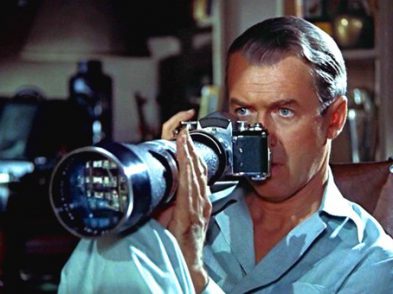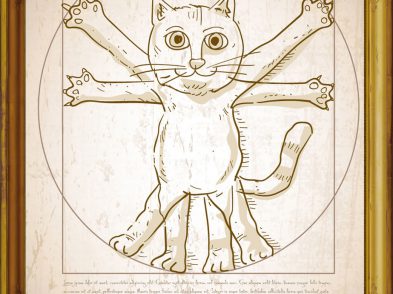Tall,
slim, always elegantly dressed, gifted with both grace and a teasing sense of
humour, Nancy Mitford was, and still is, one of the most intriguing authors of
the twentieth century.
The
first of seven children of David Freeman-Mitford, 2nd Baron Redesdale, and his
wife Sydney, Nancy Mitford was born in London in 1904. Few members of this
unique family went unnoticed by history. Her sister Jessica, for example, a
fervent communist, accompanied Esmond Romilly, Winston Churchill’s ‘red’
nephew, to the Spanish Civil War and eventually married him. Meanwhile, her
sister Unity, of opposite political views, had a long and ill-fated
relationship with Adolf Hitler.
Two
other sisters were hard ly less notorious. Diana left her first husband for Sir
Oswald Mosley, founder of the British Union of Fascists. Deborah, the only
surviving sister, married the future duke of Devonshire and turned Chatsworth
House into one of the most notable stately homes in Britain.
Nancy
Mitford was probably the most devoted to art and literature and the only one
who truly fell in love with Italy. Her romance started with a cultural tour
that took 17-year-old Mitford and four other girls from London to Paris and,
via Pisa, to Florence and Venice. In her letters to her mother, she reported
from Florence in April 1922: ‘I am having a perfectly heavenly time, I have never been so happy in my life before, in
spite of such minor incidents as fleas!’
In Fiesole ‘a dear old monk’ showed them around the monastery. Proudly, she
claimed that she was already quite good at Italian: ‘I talk as though I had
been here a month and indeed I feel like it.’ In Florence, she visited the
Duomo and Palazzo Pitti where, with the sweeping statement of a teenager, she
proclaimed to have seen ‘about one beauty in each room, the rest rubbish. The
frames are far too awful and about twice as big as the pictures. No words of
mine can describe how appalling the rooms are. We saw Mme le Brun, and several
other things, Raphaels especially, and Titian. The Uffizi is thousands of times
nicer.’ She discovered her love of paintings and especially those by Raphael,
Botticelli and Lippi, whereas Giotto to her was ‘disappointing, except in
colouring’ and Cimabue ‘most primitive.’ On Easter Sunday she went ‘to early
service at the English church and mass in the Duomo’ and witnessed the Scoppio
del Carro; then there were races at Ippodromo delle Cascine, which ‘were
lovely, most exciting and amusing’ and in the evening a screening of a ‘most
bloodthirsty and exciting’ film, which she called Dante in a letter, but which most probably was Giuseppe de
Liguoro’s silent film classic L’inferno.
After
all these first impressions she was entirely taken by Florence and conceded
that even the heat, which as an English girl she wasn’t used to and therefore
hated, only helped ‘to show up the colours.’ With certainty she claimed: ‘I
can’t like Venice as much as this. The hills around are so lovely, the highest
ones have snow on them. Then the olive, orange, lemon and cypress trees are so
pretty.’ Later in Venice she reaffirmed: ‘I would much rather have a villa in
Florence than here, because of the lovely scenery. Here of course there is
none, no trees, no grass.’
Despite
this initial preference for Florence, Venice became the Italian city she spent
most time in and she eagerly helped Colonel Gaston Palewski, an eminent French
politician, president of the France-Italy Association and the love of her life,
to raise funds for the restoration of the Ca d’Oro and parts of the Bargello
after the Venice and Florence floods of 1966.
In
1922, she had written to her mother from Florence: ‘Do you think I shall ever
come back here? I positively must!’
Yet, it took Mitford 43 years after her first visit to fulfil her desire.
Invited by Sir Harold Acton, her close friend since the 1930s, she stayed at
his home, Villa La Pietra, which she found ‘complete perfection’ and reported
in 1965: ‘One wakes up in a room larger than the Chatsworth drawing room with
sun streaming onto the bed so that one has a comfortable sun bath. Then the
art, both in the house and the galleries knocked me silly. We lunched and dined
out in wonderful villas with such gardens. Oh Italy, there’s nothing like it.’
Violet
Trefusis, legendary lover of Vita Sackville-West and inspiration for the
character of Lady Montdore in Mitford’s Love
in a Cold Climate, sent messages insisting that Mitford visit her villa,
Villa L’Ombrellino, claiming it to be ‘the most beautiful in Florence.’ Acton,
however, not without some smugness, perceived that ‘Nancy had no desire to do
so even in Violet’s absence. She was happy enough on the sunlit terrace of La
Pietra, where there was a surfeit of more interesting sights.’
See
for yourselves whether La Pietra, which Acton bequeathed to New York University
on his death in 1994, stands the test. Enjoy its art collection, the carefully
restored gardens and the view of nearby Le Cure, the city of Florence and
Fiesole in the distance. Tours require advance reservation and are offered on
Fridays (villa and garden) and Tuesdays (garden only) throughout the year with
the exception of August and the winter holiday break.
For
further information visit http://tinyurl.com/8qekfh9




